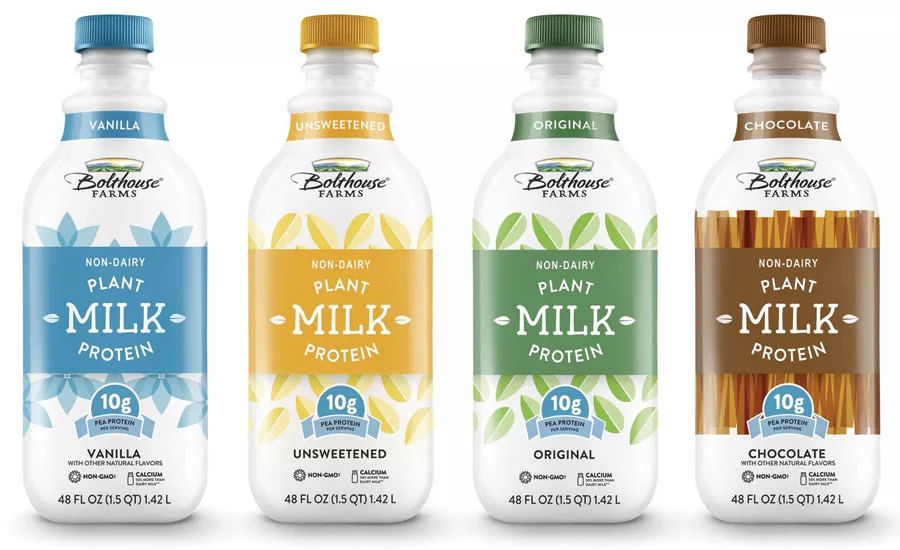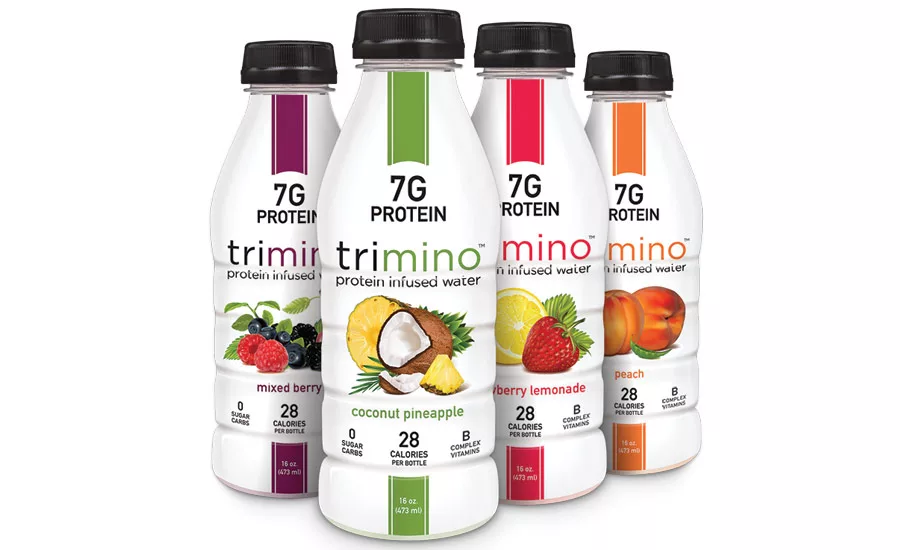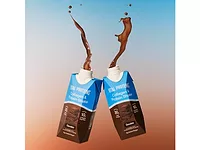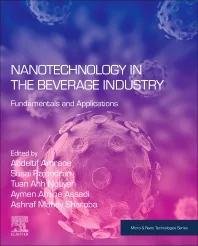Protein fortification proliferates across beverage categories
Plant-based proteins growing fastest, whey continues to dominate by volume


Living increasingly hectic lifestyles, consumers are searching for consumer packaged goods that offer healthy, on-the-go convenience. Resulting from this growing consumer demand for functional beverages as solutions for their busy lifestyles, protein is among the ingredients that have proliferated. Embracing the mass appeal of protein, beverage-makers and formulators are innovating new protein-fortified products in a variety of beverage categories for everyday consumers looking for a protein pick-me-up.
“Today, the everyday consumer seeks protein as part of a healthy and active lifestyle. Protein-enriched products are no longer just for the sports enthusiast and are moving from the gym to mass market environments. With the portability and convenience of beverages, today’s market is experiencing growth in the consumption of protein-infused beverages,” explains Lara Niemann, marketing director of the Americas at Gelita, Sioux City, Iowa.
Although protein is gaining mass acceptance, exercise enthusiasts and athletes remain the dominant consumer demographics, demanding higher levels of protein and preferring specific protein types, says Troels Laursen, director of health and nutrition at Basking Ridge, N.J.-based Arla Foods Ingredients.
“Participation in events such as marathons and triathlons is growing in popularity,” Laursen explains. “… This tells us that many more people are now getting involved in endurance sports and good quality protein has a huge role to play in helping them to hit peak performance by aiding recovery between training and events.”
With demand growing for protein-fortified products of all types and more innovative protein ingredients becoming available to beverage-makers, protein is making its way into more and more beverage categories, experts note.
“Beverage marketers and formulators continue to fortify beverages with new and novel proteins. There has been significant consumer interest in convenient delivery of these novel proteins, and beverage-makers have been working hard and quickly to deliver them in an end-product that is familiar to the customer while delivering high protein claims,” explains Jonathan Spurway, general manager at Spirit Lake, Iowa-based Rembrandt Nutritionals.
Sports and nutritional drinks, smoothies, and meal-replacement beverages are the mainstay protein categories, but coffees, energy drinks and hydration drinks increasingly are being fortified with protein as well, he adds.
“Proteins continue to find their way into more and more conventional food systems, and protein-enhanced beverages is likely a trend that will continue to morph into a staple,” Spurway says. “We can expect the protein source choices to continue to grow to a point where there exists a protein for every consumer and lifestyle option.”
Grace S. Harris, director of applications and business development at Hilmar, Calif.-based Hilmar Ingredients, also notes the evolution of protein beverages and adds that there has been an uptick in clear-colored protein beverages.
“There are many requests and new launches for clear beverages that include novel and cross-over components as well as protein,” she explains. “Proteins that remain clear, such as our Hilmar 9020 whey protein isolate, have been significant in fueling new beverage launches. Clear protein-containing beverages provide energy, amino acids and satisfying consuming benefits such as low viscosity, fruit flavors and refreshing, quick energy.”
Leading the Whey
Currently, whey is the most commonly used protein, according to experts. It is known for its muscle growth benefits and long history with exercise enthusiasts and body builders alike.
“Milk proteins remain dominant in the performance nutrition arena due to their high-quality amino acid profile and the associated benefits in terms of muscle growth, repair and recovery,” explains Will McCormack, nutrition business development manager at Synergy Flavors Inc., Wauconda, Ill. “In addition to being a high-quality protein source, milk proteins, and in particular whey protein, benefit from their rapid digestion and absorption kinetics. Milk protein concentrates and isolates, caseinates and whey protein concentrates and isolates can all be included depending on the desired functional properties, label declarations and product-specific call-outs.”
Although whey proteins have been used in powdered beverages for many years, McCormack notes that whey suppliers have innovated their ingredients to provide solutions to the challenges that can arise when formulating ready-to-drink (RTD) beverages with this protein. These types of products offer several benefits to the end-consumer, with on-the-go convenience chief among them.
Among the protein products Synergy's parent company Carbery Group offers are its portfolio of Optipep hydrolyzed whey protein products and Isolac whey protein isolates, he adds.
Taking whey protein a step further, Arla’s Laursen notes that hydrolyzed whey protein can enhance the benefits of whey proteins.
“Whey proteins offer excellent benefits, but whey protein hydrolysates are even better,” Laursen says. “They are premium proteins that have been finely chopped — or ‘pre-digested’ — so they are absorbed more quickly by the body than standard proteins. This ensures they get to work faster on helping the muscles recover after exercise. In particular, they offer a range of benefits that will appeal directly to serious users of sports nutrition. These include easy digestion, fast absorption, rapid delivery of key amino acids for muscle building and increased fat burn for improved body composition.”
Arla Foods Ingredients offers Lacprodan Hydro.clear and Lacprodan Hydro.milk, which can provide high levels of hydrolyzed protein in ultra-high temperature, ready-to-drink beverages, Laursen says.
Although whey protein has come a long way in terms of its formulation capabilities, Hilmar’s Harris notes a few challenges that should be taken into account when working with whey protein.
“Formulating beverages particularly containing protein is a challenge. These ingredients must have good functional properties such as heat stability, acid/heat stability, and in many cases, excellent clarity,” she explains. “The stabilizing system is key to optimizing long shelf life in a beverage. Other things to consider are the viscosity of the finished beverage, pH, and overall flavor and mouthfeel. Working with good ingredients and consulting your suppliers for technical support is critical [to] formulating a product to meet nutritional, organoleptic and financial goals.”
All-Natural Sources
Yet, whey protein isn’t the only animal-based protein that can be used in beverage formulations. Gelita’s Niemann notes that collagen peptides can be a great protein addition for beverages as well.
“Collagen peptides are valuable proteins in many health applications without necessarily involving high concentrations of all the essential amino acids,” she explains. “As collagen is the most-abundant protein found in humans (more than 30 percent of the body’s protein is collagen) and collagen peptides are the ideal protein source for supporting metabolic turnover, they are very efficient at supporting the body’s protein requirements in the connective tissue of bones, joins, skin, ligaments and tendons.”
Currently, this type of protein is experiencing notable growth in the beverage industry because of the benefits it offers to consumers and formulators, she says. Collagen peptides are ideal for clear solutions and are neutral in taste, she says.
“As pure collagen proteins with neutral odor and taste, these peptides allow a high protein dosage without any effect on the sensory profile,” Niemann says. “It provides low viscosity even in high concentrations and excellent clarity of beverages without any precipitation. Furthermore, collagen peptides can be easily mixed with other ingredients like vitamins, minerals or amino acids. It can be combined with other proteins to obtain a high protein load. Collagen proteins can also be formulated in fine powder beverage mixes. These collagen protein powders offer excellent wettability and solubility without any lump formation.”
Gelita has a portfolio of collagen peptides offering various nutritional and functional benefits to beverage formulations. Among those within its portfolio are BodyBalance, Verisol, Fortigel and Fortibone.
Rembrandt’s Spurway notes that egg proteins also can benefit beverage formulations. “Rembrandt Nutritionals currently offers liquid and frozen egg products (whites, whole and yolk) as well as dried egg products. Dried egg whites have been long used in sports/nutritional supplements,” he says. “Rembrandt also agglomerates (instantizes) egg white for improved solubility in beverages — this is our Rempro 8000 SF product. We are currently commercializing a new de-flavored egg white protein isolate — Rempro 8090 — for both dry beverage mixes and RTD processing. It is neutral in flavor and naturally enhances sweetness in beverage applications.”
He adds that egg proteins, like Rempro 8090, are high-protein, clean-label ingredients.
Plant Power
Although animal-based proteins dominate the market, experts note that plant proteins currently are the fastest growing protein type. Whether it is pea, hemp or soy, plant proteins are gaining ground in a variety of beverage categories.
“Whey protein continues to be a solid front-runner with trends being around ‘grass fed,’ ‘no artificial growth hormones,’ etc. However, plant proteins are continually on a steep incline,” says Bart Child, senior vice president of commercial development at Anaheim, Calif.-based Nellson LLC.
Formulations using plant-based proteins tend to include blends of proteins from different plant sources, Child says. “We continue to see beverage-makers utilizing protein as blends in most of the formulations. You hardly see a stand-alone protein and instead see blends consisting of pea, hemp, pumpkin and more.”
Although natural and clean-label trends are driving interest in plant-based proteins, the proliferation of plant-protein sources also is contributing to the growing plant-protein market, Child says. “The fact that we keep seeing ‘new’ proteins arise — mushroom protein, algae protein, potato protein — excites consumers,” he explains. “They’re seeing that they have options — clean, fast and tasty options — that stem not only from more fun and innovative flavor blends, but also in the different protein vehicles being offered.”
Still relatively new to the market, plant proteins continue to advance and become easier to formulate with as beverage-makers and ingredient suppliers gain experience with these ingredients, Synergy’s McCormack explains.
“What’s interesting is from a taste and flavor perspective is that you’re seeing the evolution of those ingredients as well,” he says. “… If you look at where soy has come from, if you look at the evolution of what’s happening in pea protein processing, all of those ingredients are getting cleaner from a manufacturing standpoint, but also again on the food technologists/flavor chemists side of things, they’re learning more and improving how we approach those types of products as well. The way whey, over the past 20 years, has become a better supplement, you’re going to see that now with plant-based proteins, whereby some of those products are still quite challenging, but they will evolve to become more acceptable consumer products over the next couple of years as well.” BI
Looking for a reprint of this article?
From high-res PDFs to custom plaques, order your copy today!








